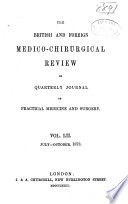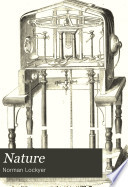 | 1873 - 556 pages
...different external conditions, the work done is always constant in a single contraction. " Law III. When the same muscle (or group of muscles) is kept...done, multiplied by the rate of work, is constant." Law I he calls Borelli's law, as it corresponds to his 121st, 122nd, and 123rd propositions, but Borelli,... | |
 | 1873 - 702 pages
...observations and experiments on this subject he has deduced the law of fatigue, which he enunciates thus: — When the same muscle (or group of muscles) is kept...done, multiplied by the rate of work, is constant. He has also stated as laws the following propositions: — I. In comparing together different muscles,... | |
 | 1873 - 432 pages
...different external conditions, the work done is always constant in a single contraction. Law III. W/ten the same muscle (or group of muscles) is kept in constant...done, multiplied by the rate of work, is constant. The "proof" of Law II. consists of a discussion of some experiments of Prof. Stanley Jevons, in which... | |
 | Samuel Haughton - 1873 - 542 pages
...different etternal conditions, the work done is always constant in a single contraction. LAW III. — When the same muscle (or group of muscles) is kept in constant action until fatigue sett in, the total work done, multiplied by the rate of work, is constant. . . . I shall now take these... | |
 | 1874 - 574 pages
...held in the hand is half the weight of the arm. He further deduces a " law of fatigue," which is, that when the same muscle (or group of muscles) is kept...done, multiplied by the rate of work, is constant ; so that if a man become fatigued after walking thirty miles at the usual rate, if he walk twice as... | |
 | Sir Norman Lockyer - 1874 - 546 pages
...Principle of Least Action. These are enunciated as follows, the third as applied to the heart : — " When the same muscle (or group of muscles) is kept...done, multiplied by the rate of work, is constant." " The Framer of the Universe (Aripuovpyos rov xoafiov) has constructed all muscles upon the principle... | |
 | Sir Norman Lockyer - 1874 - 542 pages
...Principle of Least Action. These are enuncialed as follows, the third as applied to the heart : — " When the same muscle (or group of muscles) is kept...done, multiplied by the rate of work, is constant." " The Framer of the Universe (Aij/woupyo's TOV <co<r/ioC) has constructed all muscles upon the principle... | |
 | 1874 - 488 pages
...people. THE LAW OP FATIGUE. AUGHTON, in his " Animal Mechanics," thus states the » law of fatigue: When the same muscle, or group of muscles, is kept...done, multiplied by the rate of work, is constant. Suppose a man, walking at his ordinary pace, does not become tired until he has gone thirty miles.... | |
 | 1874 - 788 pages
...third as applied to the heart :— " When the same muscle (or group of muscles) is kept in const ant action until fatigue sets in, the total work done, multiplied by the rate of work, is constant." " The Framer of the Universe (^junvpyot TOV KOO-/IOV) has constructed all muscles upon the principle... | |
 | Sir Norman Lockyer - 1875 - 538 pages
...resulting in' (3), Prof. Haughton assumes the truth of the following law (Prin. An. Mech., p. 442) :— " When the same muscle (or group of muscles) is kept...done, multiplied by the rate of work, is constant." By " rate of work " is meant the work per second. But in these experiments the muscles were not " kept... | |
| |